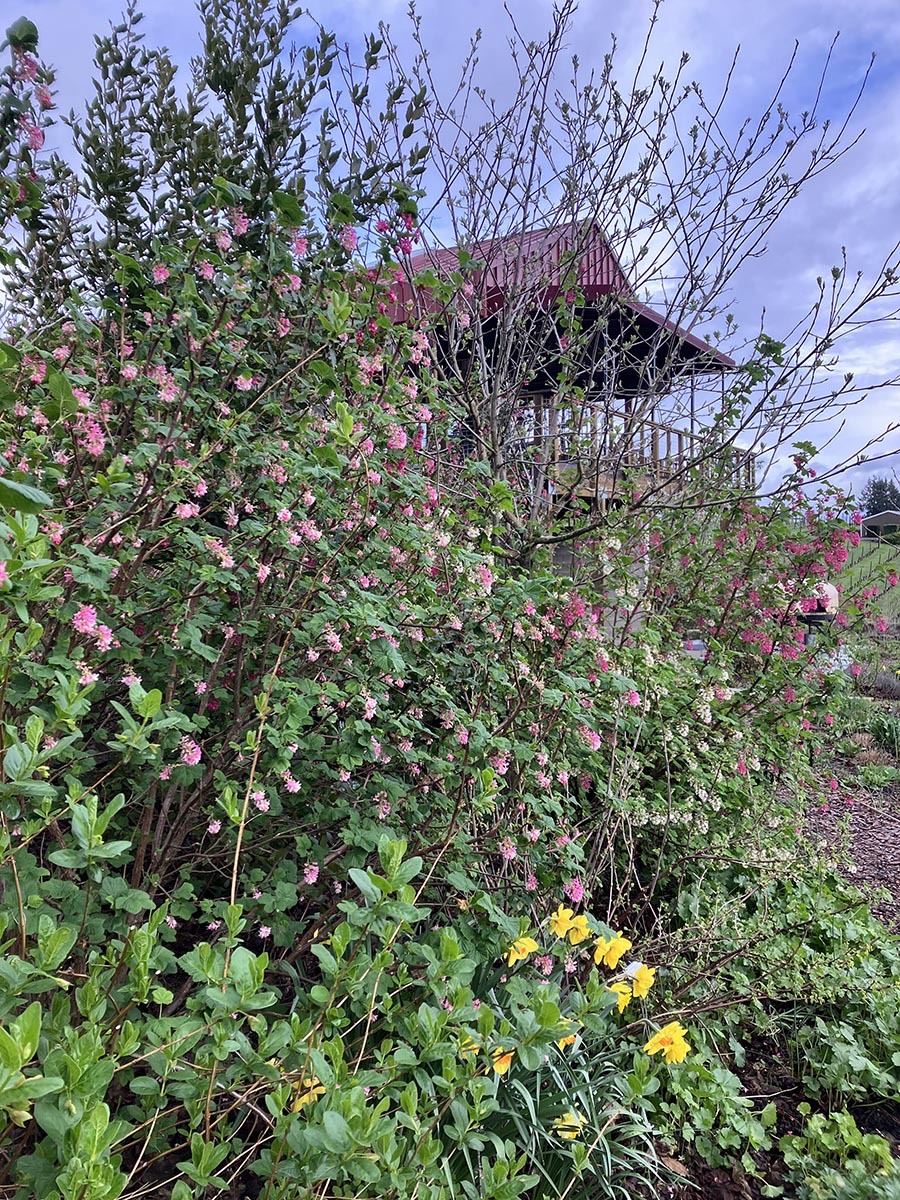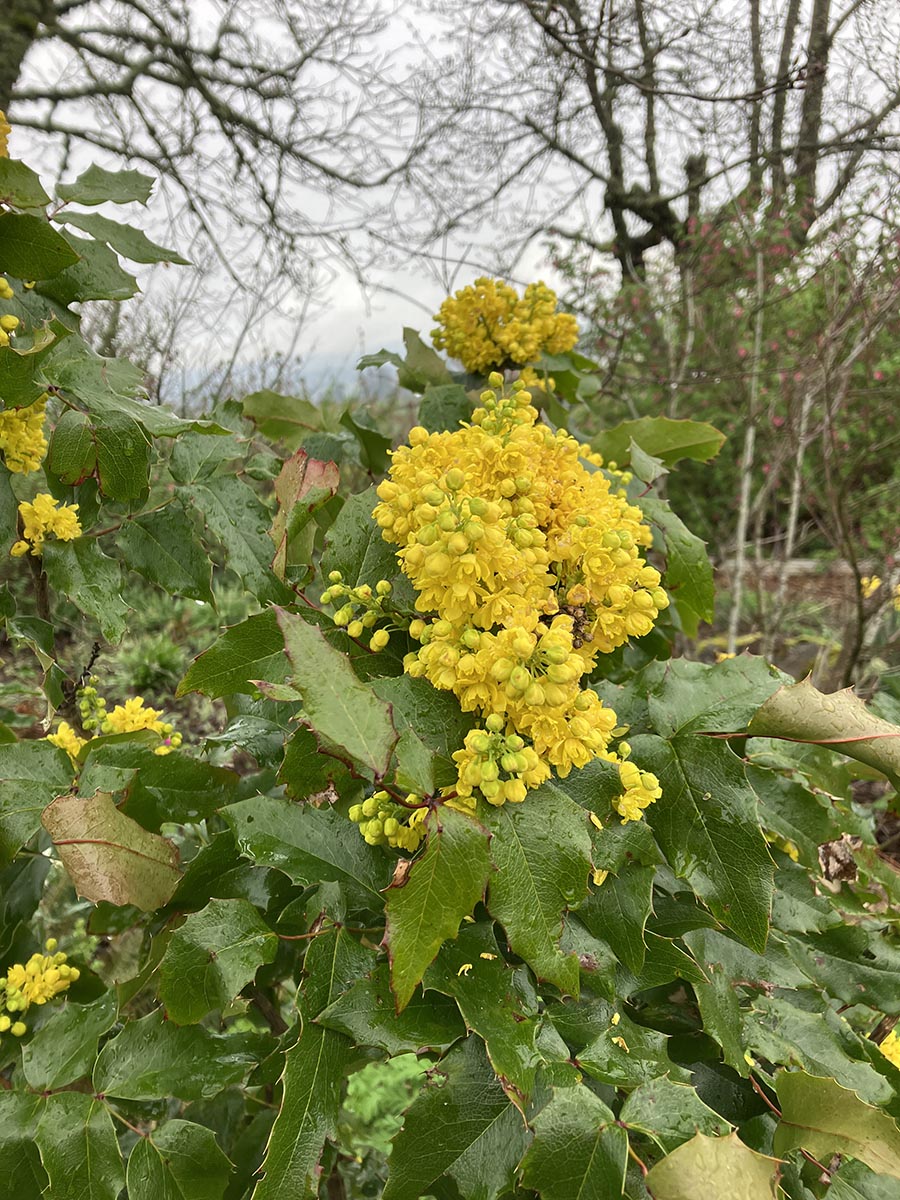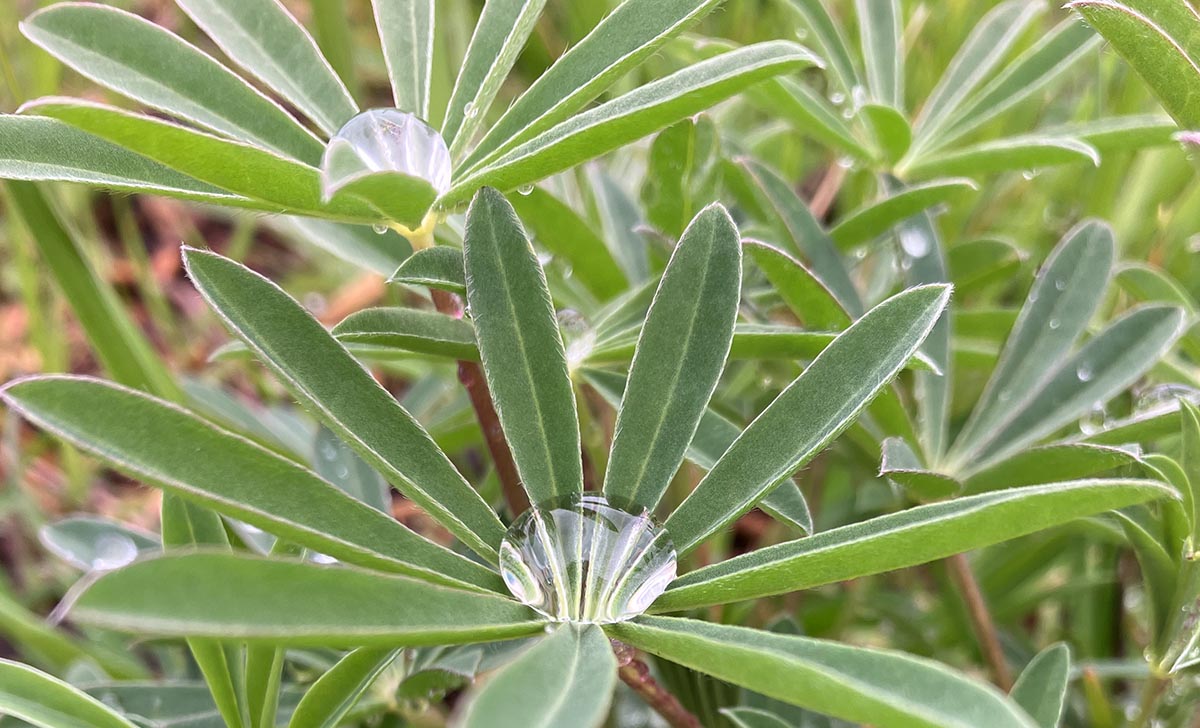“To be native to a place we must learn to speak its language.” – Robin Wall Kimmerer, Braiding Sweetgrass
On a sunny spring morning, walking to admire the tulips in bloom, I was stopped in my tracks. It was the site of the buddleia, whose buds were shriveled and forlorn that made me pause. For the last year, I had noticed the bush showing less vigor, anticipating that in a few years, it would need to be removed. Now was the time it appeared. It was in this very breath of realization that I noticed the smallest signs of new growth emerging below in the soil. The beginnings of an elderberry tree growing in the buddleia’s place. It felt like a sign from the garden, the end of one plant spurring the birth of another. An opportunity for a new garden, a new way of knowing and experiencing the space. How apt that it was our native elderberry that chose to root there, right at the heart of the garden.
The elderberry is said to act, as the name implies, like the elder of the garden, sharing mycelium networks with other plants. These networks create a form of fungal communication below the soil, expanding the reach of any one plant’s roots and allowing plants to interact with each other. This elder grows around a dense patch of goldenrod, ocean spray, and pink flowering currant. All self-seeded in the center of the garden. Seeing these natives reseed throughout the garden, is to see a vibrant ecosystem come alive. Over time, with age and storms, non-native ornamentals die in any garden. Now, instead of replanting, I merely remove the corpse of the plant, allowing the sheltered native seedling to take root and emerge in its place. In the goldenrod patch, you will see the remnants of a rose that has been dwarfed by the stand of stately yellow blooms of Solidago in late summer. Lupine seedlings burst over the shadows of lavender, and yarrow gently sways under the branches of the black currant, claiming its spot in the garden as uniquely its own.


The popularity of planting with natives is more than ever recognized by gardeners who are rising to the challenges of increasing losses of diversity with purposeful plantings of native plants to support our weakening natural world. All of this is deeply important and meaningful work that you can see shaping the Brooks garden with native plantings increasingly filling the spaces and being allowed to roam freely. Beyond these reasons for planting natives I have realized that they also can give gardeners a sense of place. Understanding the natural world that once roamed in our very yards encourages us to feel connected and invested in our local flora and fauna. It serves as a way to reckon with the history of ecological degradation in our local communities while also allowing us to reimage the future. It can remind us of how small our own lives are at the scale of these larger ecosystems. When I am long forgotten, there will still be this, the oak trees I planted, providing food for thousands of other lives.
Working with native plants is also making me newly aware of the entire lifecycle of each plant, awakening a new form of nurturing and love. I now understand the process that comes from seeding camas bulbs in the fall and waiting six months to see those tiny green stalks emerge, smaller than my pinky nail. A newfound awareness of the magic in that moment, knowing that my care and patience have brought forward this tiny miracle. I know what it is to prick out the baby seedlings of fringe cups and pot them on. To write its Latin name on a wooden stake, Tellima grandiflora, rolling off my tongue like a poem. I have felt a deepening awareness with these native plants, I have raised them, loved them and sent them on their way. All the while knowing that they care and nurture me. I found a voice for these feelings in Braiding Sweetgrass when Robin Wall Kimmerer writes that it’s one thing to know the names of a plant; it’s another to know their song. This is what gardening with natives is teaching me, to listen. A song is built with each native that roots into my garden. My work is to blend these songs together, creating harmony, and then to sit back on my heels, listening as it echoes out beyond my reach.
With Love from the Garden,
Shannon
P.S. I still plan on gardening with the blooms of non-natives like lavender, dahlias, zinnias, snapdragons, and so many more. I understand how beneficial these blooms are for pollinators. I will always grow these and so many more of the flowers and medicines that I deeply love. What I am writing about here is that before I go and plant these non-natives, I am giving a moment’s pause and witnessing what may emerge from allowing natives to re-wild the space. This prolific reseeding and reimaging are made possible because a few of these natives were incorporated and planted in the landscape to begin with. From these mother plants, an entire ecosystem has emerged of natives spreading all over the landscape, moving with a whim that I have learned to stop attempting to control and just enjoy.
Farm to Table
This month, our tasting room menu features radishes, parsley, garlic chives, and eggs.
